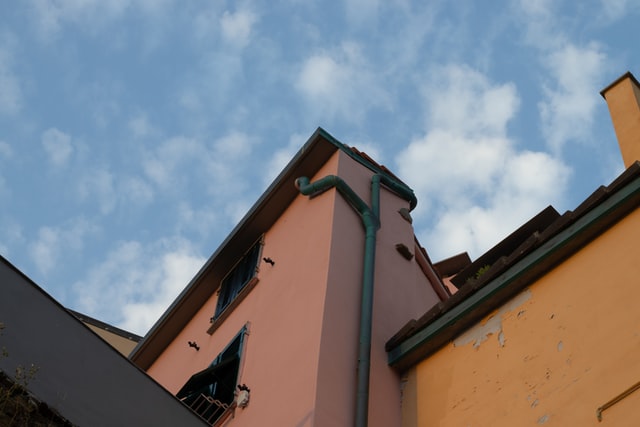
There’s more that goes into choosing a new roof than most people would think about. If you’ve decided you’re going to opt for a metal roof, it’s likely you’ve already weighed up the various pros and cons of the material, how long it might last, and even whether it’s right for the climate you live in. But once you’ve gone beyond the material itself, you’ve still got to make decisions about the design and functionality of your roof.
One of the key questions people come up against at this point is whether metal roofs need gutters. This is an issue that seems to divide people. Some assume you do need gutters, as the water that falls on your roof still needs to be directed away to the right drainage points. Others believe metal roofs are by design resistant to leakage, so water doesn’t need to be directed in the same way a tile roof would.
Let’s take a closer look at the issue.
The Short Answer
Do metal roofs need gutters? Strictly speaking, they don’t necessarily need a gutter system — your roof won’t often experience damage because you don’t have gutters. But as with so many aspects regarding your roof, your decision really depends on the circumstances. There are times that while gutters aren’t needed, they can certainly be beneficial.
Why Wouldn’t They Need Gutters?
This all comes down to the materials and design used for your roof. Firstly, metal roofs are usually constructed of flat panels — not only do these tend to be relatively leak proof but most used today are resistant to the kinds of mold and deterioration that leave other roof materials vulnerable to settling water. What’s more, when they are designed at the correct slope — known as pitch — rainwater runs freely away from the roof without having to channel it. Other roof materials, like tile, require elements to direct water away from the roof and toward the drainage system.
But this also highlights what happens to rainwater and snow when it does drop onto your metal roof. The design means these fluids run down the surface and freely drop off the other side. You need to consider whether the design of your property, and people who might be walking around the perimeter of the building, might face some issues as a result of this.
Why Should You Get Gutters?
So, if these materials are usually designed to ensure water doesn’t pool on the surface, why might metal roofs need gutters?
To Protect the Foundations
Perhaps the most important reason to fit gutters to your metal roof is to reduce the potential for foundation damage. When water is allowed to just run freely off the surface of your roof, it has nowhere to go but straight down onto the land surrounding your house. Over time, this can seep into the foundations, causing them to become weaker. This in turn can lead to severe cracks and in extreme cases subsidence. Installing gutters will lead this water safely to the drainage point on the ground.
To Maintain the Walls
In most cases, the rainwater that runs from your metal roof will not immediately hit the ground. Rather, it’s more likely to run over the eaves and down your walls first. This presents a couple of issues. Firstly, this gathering dampness on your eaves and walls can lead to unsightly water staining and mold. However, this moisture can also seep into any permeable aspects of your walls. In warmer months, alongside humidity, this can affect the integrity of your walls. In the winter, this moisture can freeze, with the expansion of ice causing cracking. Again, correctly installed gutters will help you avoid this by collecting water before it reaches your walls.
To Minimize Flooding Potential
If you have a basement, the last thing you want is a lot of water running from your metal roof and pouring onto the ground. If you have no other design elements to run water away from your property, this can result in the rain water entering and flooding your basement. You may think this isn’t so much of a problem in Texas, but it’s worth considering that the State is seeing increasingly high levels of rainfall, and this is only expected to get worse. Installing a functional gutter system helps to make sure the roof water only leads to the correct drainage point.
What Type of Gutters to Get
If you’ve decided your metal roof does need gutters, your next consideration is what type of gutter to get. This will usually come down to your priorities for function and aesthetics. From a materials perspective, you can get some made from copper, zinc, aluminum, vinyl, PVC, even galvanized steel. However, your decision here is how the weight of it will be supported. Your gutters shouldn’t be attached directly to the roof deck like with other types of roofing material. Metal roofs need their gutters attached to the facia board. As such, you have to consider whether the facia board will take the weight of your gutter material as well as any water it will hold.
The next consideration is style. The standard gutter you’ll see on most buildings is the half-round type. However, on a metal roof this will need additional brackets as they’re not strictly designed to fit snugly against your fascia boards. Many people choose to instead opt for K-style metal gutters that are more like squared troughs and have an industrial look that is more in keeping with the roof material. These also tend to hold a larger capacity of water than half-round gutters, so there’s less chance of overflow.

The Alternatives
While gutters have a clear function, it still might not be something you think is aesthetically right for your home. There are alternative options that help to address some of the challenges that having a gutterless metal roof can pose.
Metal louvres can be affixed to points of your metal roof to direct the rainwater away from the sides of your house and prevent it from running down to the basement or foundations. You can also adjust the grading of your house — the slope of the land surrounding your building to ensure rainwater runs away from the foundation and toward drainage points. However, grading adjustment can take extensive reworking of your surrounding areas and potentially disrupt any existing landscaping features you have in place.
If you haven’t yet had your metal roof fitted you can have it designed to have built-in lips that act as a form of guttering. This can be the best of both worlds — it isn’t quite so aesthetically obvious as a traditional gutter, while at the same time it directs water safely toward the drainage area.
Wrapping Up
Do metal roofs need gutters? Well, it can certainly be helpful to have some form of system to direct rainwater away from your home. Gutters are the traditional approach to this as they are designed to redirect any runoff that can cause foundation and structural issues. They also tend to be the most cost effective route. That doesn’t mean to say gutters are the only option, though. There are other ways to redirect the water and even build a form of guttering into the roof design. By taking the time to consider what is functionally and aesthetically right for your property, you can make the most out of your choice to get a metal roof.





